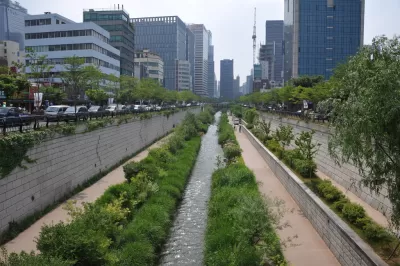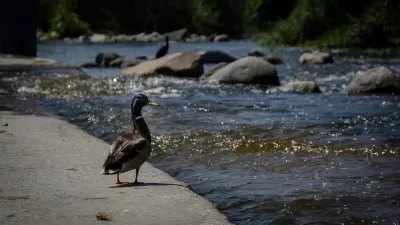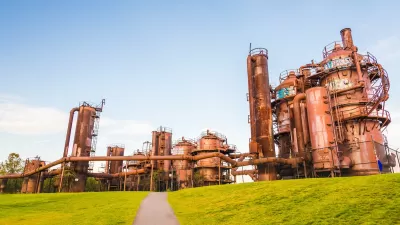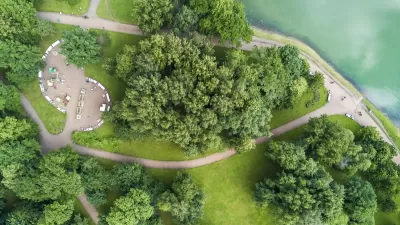As more cities "daylight" the rivers and waterways formerly interred underground to culverts and stormdrains, a process for ensuring community leadership and equitable outcomes is also coming to light.

Jenny Hoffner writes on the potential for cities to change the fate of urban watersheds:
Urban rivers that have been forgotten or buried underground for years often wind their way through neighborhoods that also have been forgotten, marginalized, or intentionally burdened with infrastructure like landfills, power plants, and sports arenas that damage the quality of life for residents.
For example, in and around the busiest airport in the world, Atlanta’s Hartsfield-Jackson International, the Flint River can be found running through pipes under parking lots and runways. Many of the neighborhoods that once stood there, and the people who once called those neighborhoods home, are long gone, bought out in favor of airport expansion.
Until we can address both the marginalization of rivers and of their neighbors, it will be impossible to create thriving communities with healthy rivers and clean water for all. Healthy rivers and communities share similar attributes, including diversity, interconnection, productivity, and resilience. And the health and vitality of both are intertwined.
There is a remedy for the situation, however, which Hoffner terms "equitable urban river restoration," or the process of rediscovering and connecting to urban rivers in a community-led process. Numerous case studies already exist, according to Hoffner, who details examples from New York City and Atlanta and lays out a four-step process for success.
FULL STORY: Restoring Our Hidden Rivers: Revisiting Urban Waterways with New Eyes

Planetizen Federal Action Tracker
A weekly monitor of how Trump’s orders and actions are impacting planners and planning in America.

San Francisco's School District Spent $105M To Build Affordable Housing for Teachers — And That's Just the Beginning
SFUSD joins a growing list of school districts using their land holdings to address housing affordability challenges faced by their own employees.

The Tiny, Adorable $7,000 Car Turning Japan Onto EVs
The single seat Mibot charges from a regular plug as quickly as an iPad, and is about half the price of an average EV.

Seattle's Plan for Adopting Driverless Cars
Equity, safety, accessibility and affordability are front of mind as the city prepares for robotaxis and other autonomous vehicles.

As Trump Phases Out FEMA, Is It Time to Flee the Floodplains?
With less federal funding available for disaster relief efforts, the need to relocate at-risk communities is more urgent than ever.

With Protected Lanes, 460% More People Commute by Bike
For those needing more ammo, more data proving what we already knew is here.
Urban Design for Planners 1: Software Tools
This six-course series explores essential urban design concepts using open source software and equips planners with the tools they need to participate fully in the urban design process.
Planning for Universal Design
Learn the tools for implementing Universal Design in planning regulations.
Smith Gee Studio
City of Charlotte
City of Camden Redevelopment Agency
City of Astoria
Transportation Research & Education Center (TREC) at Portland State University
US High Speed Rail Association
City of Camden Redevelopment Agency
Municipality of Princeton (NJ)





























